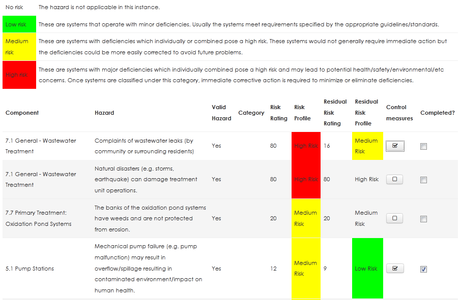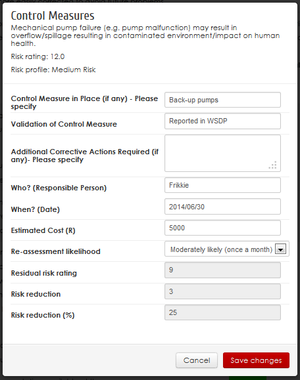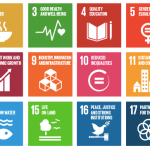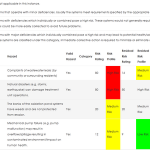Making wastewater risk abatement planning easier – Piloting of web-based WRC W2RAP Tools

The development and introduction of appropriate tools to guide these activities will contribute significantly to ensuring that appropriate wastewater risk abatement planning is occurring in South Africa.
Subsequently, two WRC wastewater risk abatement planning tools have been developed, namely: (1) Wastewater Risk Abatement Plan Tool (allows development and tracking of a W2RAP), and (2) Wastewater Risk Abatement Planning Status Checklist Tool (allows the user to determine status of W2RAP processes). Draft W2RAP tools were piloted at the following municipalities:
- Hantam Municipality (Northern Cape)
- Hessequa Municipality (Western Cape)
- Amajuba District Municipality (KwaZulu Natal)
- Sol Plaatje Municipality (Northern Cape)
Piloting of the tools, site visits and associated interactions with municipalities have indicated that the draft W2RAP tools are easy to use and appropriate for purpose. Users indicated a number of required amendments, which are being incorporated into the amended tools. A summary of key feedback from use of the tools includes:
- The tool helps us to develop our own W2RAPs.
- Although it takes some time, the tool is easy to complete and useful as it provides a summary of high priority risks allowing us to rank the risks and link them to specific root causes that give rise to hazardous events. The ability to calculate residual risk and provision of examples of corrective actions is also useful.
- The tool gives us clear guidance on the W2RAP process. Further training, however, may be required for more staff to fully understand W2RAPs and how to use the tools.
- Through this tool one can easily produce a report for feedback to council/stakeholders and/or upload the data to other systems (e.g. Green Drop System).
 Experience from piloting has also shown that:
Experience from piloting has also shown that:
- Implementation of W2RAPs is a challenge as many municipalities do not have enough sufficiently skilled operational and maintenance staff.
- Early W2RAPs only focussed on risks identified at the wastewater treatment works (and did not consider other components e.g. collection system).
- The pilot municipalities acknowledged the value of managing wastewater services using the W2RAP principles and gained an improved understanding of their challenges.
- On-going guidance to understand wastewater risk abatement planning, more easily complete a W2RAP and flagging high risk issues was expressed by municipalities.
The next phase of the project includes: will also see the following:
- Additional workshopping of the tools (WISA 2014 workshop and two additional workshops at appropriate locations).
- Finalization of the spreadsheet- and web-based W2RAP Tool and W2RAP Checklist Tool
- Development of a guideline document describing how to use the tools.
If you would like to find out more about the W2RAP tools, please contact us.










